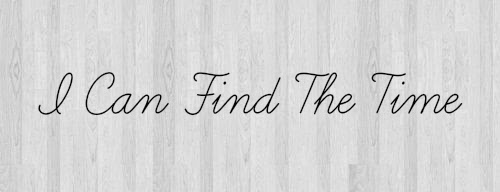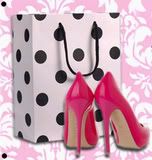I know I'm not the only one who LOVES the
Restoration Hardware Filament Chandelier, right?
But that price tag?!?! $1,698?!?! What the What?
I don't know about you...but I could never justify spending more
than a mortgage payment on a light fixture...
And at 60" long it's way too large for my dining room.
But I loooooove it! And I waaaaaant it!
So I decided to do what any other DIY'er out there would do...
BUILD IT MYSELF!
My grand total is $47.50! Wow! Over $1,650 less than the Restoration Hardware Filament Chandelier! That's only like 2.7% of the cost of the original. I'd call this a successful DIY Knock off!!!
UPDATE: my DIY chandelier was featured on KnockOff Decor!
Click here to see the feature!
UPDATE: my DIY chandelier was featured on KnockOff Decor!
Click here to see the feature!
Here are the facts before you get started on something like this. I call
this a knock-off project, but obviously there are some design/build modifications that just can't be avoided:
»Most obvious being...This light fixture is made out of wood...not metal. Duh! And it comes with all the pros/cons of wood working.Wood filler? Check! Spray paint? Check! High school geometry? Check!
»Secondly, there are no glass panels in my light for a few reasons:
ease of build...weight of fixture...cost...the geometry I mentioned above.
»My main idea is to start with an outdated light bar fixture and build
the frame around it. There are other ways to make the same thing with individual sockets and wiring that would give you even more freedom with dimensions that I have. Someone please do this and show me!!
»And last, but not least...SAFETY! I feel comfortable working with hard
wired lights and fixtures and know enough to know how to be safe. If
you don't like the idea of making a light fixture then stop here and just
scroll down and check out the pictures!
EDIT: this tutorial has gotten CRAZY LONG so here is a list of the
main points so you can jump around more easily:
(STEP 1) Choosing supplies
(STEP 2) Building the wood frame
(STEP 3) Assembling the mounting pieces and wiring
(STEP 4) Build wood canopy
(STEP 5) Install fixture
Cost Breakdown
(STEP 1)
First things first...gather your main supplies
The most important item on your supply list, and the one that will decide
the size of your fixture, is the light bar fixture. We all know and
loathe these "Hollywood lights" from too many bathrooms. But now you
get to use one for good...not evil!
Shout out: I pinned this tutorial from The Summery Umbrella ages ago
and loved the idea of reusing these old outdated light bars. Check it out...
it's a great idea for another high impact DIY light fixture!
I found a used 4 socket light bar in perfect brassy condition at my Habitat
for Humanity Restore for $8, but you can buy them new at Big Orange or
Big Blue for $15 and up.
Here are the rest of the supplies:
Wood Chandelier and canopy Supplies:
1x2 select pine boards (quantity depends on dimensions of your light fixture and canopy)
1x6 pine board
3/4" square dowels
miter saw
Kreg Jig
pocket hole screws
wood glue
wood filler
paint/primer
Wiring and Mounting Supplies:
light bar fixture (mine is a 4 socket model)
2- 1/2" rectangular lampholder covers (Big Orange Item #677698)
2- 12"x1/2" iron pipes with both ends threaded (length might vary based on your ceiling height)
1- 1/2" iron reducing coupling (Big Orange item #188836)
1- 1/2" iron cap (Big Orange item #181994)
indoor lamp wire (safe for hard wired fixtures)
wire nut connectors
wire strippers
(STEP 2)
Next on the list...Build the dang thang!
Using measurements from my previous light fixture and the light bar I had,
I decided I wanted my light fixture to be 30" long and 15" wide at the base.
And before we start building the outer cage...a quick geometry lesson.
(I'm no math major so just go with me here). What you are going to build
is two Isosceles Trapezoids, with four long perpendicular boards connecting them. This means the long sides, top, and bottom will be rectangles. (red
dotted line below)
This is one major modification from the original Filament Chandelier to
my design. The original frame has Isosceles Trapezoids on the ends AND
the two long sides. I tried...and tried...and tried to figure out how to make
this work with the tools I own and the less than perfect attention to detail
I possess...and it just didn't work. So I built the end frames with no tilt
and they looked great.
Next on the geometry lesson...ANGLES! Ugh! I found some really cool
online math calculators and equations for calculating angles in trapezoids...
but let me save you some time...
10 DEGREES
Yes, that's all you need to know to make EXACTLY what I made...
10 DEGREES
Set your mitre saw to the 10 degree mark and DO NOT CHANGE IT.
You will cut four 1x2 boards for each end piece...all cuts are the same 10
degree angle. Here's a quick mock up to show how the cuts look:
(this is not to scale and I didn't add dimensions because it depends on your design)
What I was trying to show on this super fancy drawing is that the top
and bottom pieces have cuts going against each other (red dotted lines).
And the side pieces have cuts that run the same way on the board
(green dotted lines).
Once you have your four pieces of the trapezoid cut...attach them with
wood glue and pocket holes.
Next, cut 4 pieces of 1x2 select pine boards for the long pieces of the frame.
My entire light fixture is 30", so these pieces were 28.5" long. When you
attach the pieces you'll have to decide how you want them to line up. Since
these pieces are not ripped down at an angle, you will have a gap. I chose
to align my long boards with the outer edge of the end frame...leaving the
gap on the top/bottom of the frame. This is the best picture I could find to
show you what I mean...
Attach all four boards with pocket holes. You should now have something that looks like this with only 1x2 boards...
The next step in building the wood frame is to add the 1x6 board that will have the holes for the lights. Cut this piece to fit and drill the holes for lights
BEFORE YOU INSTALL IT. Again, I'm not going to give my measurements
because it will be 100% based on the light fixture you are using.
(KEEP IN MIND: the rectangle lampholder covers that are used to hang
the light fixture are 5" long...so you will need that much space between
the holes to install them properly)
When you are ready to install the 1x6 make sure to install it to be lined
up with the BOTTOM of the top 1x2 of the end frame. You want to create
a hollow section above the 1x6 for all the lighting parts to hide.
Damn...that's super confusing. Here is a pic to help show what I mean:
Now you can cut and install the 3/4" square dowels to the edges of the 1x6.
This will create the sides of the hollow section to hide all the lighting wires.
Al. Most.There...
Just the finishing steps to go...wood filler...sand...wipe down...paint black
(or any other color you'd like!)
(or any other color you'd like!)
And...this concludes the building part of today's program. Yea! You made it. Now you have a complete frame for your own DIY knock off Restoration Hardware Filament Chandelier.
(STEP 3)
Next we need to add some hidden support for hanging and wiring.
This part took me FOREVER to figure out and about 7 trips to
Big Orange and Big Blue. I knew that I wanted to be 1000% sure about the
mounting of the light so it was beyond secure. Also, I had to be super safe with the wiring. So here are the main points:
-»There is absolutely ZERO pressure or weight on the 1x2 pieces of the
frame. ALL of the weight is hanging from the 1x6 board in the middle. I
did this because it's the largest solid piece of wood in the fixture and least
likely to be touched once it's installed.
-»Likewise, there is absolutely ZERO weight on the light bar back plate.
It is secured to the fixture, but basically floating in place.
-»Next...all my pipes and fittings are threaded...no pressure couplings.
The awesome guy at Big Blue who helped me find some of my pieces
assured me the pressure couplings would be ok...but I couldn't risk it.
-»And one final point...this fixture is anchored to a scrap wood 2x4 that is
anchored to ceiling joists. The bracket in the ceiling where light fixtures
are usually hung from has no bearing on the installation of this fixture.
Of course, the wires are connected through the original junction box, but it
is not holding up the weight of the fixture.
Now to add all the mounting and wiring pieces...
Um...
How do I explain this...
I know! A picture is worth a thousand words:

Here are the steps I took:
1. install 2 rectangular lampholder covers
2. install 2 small wood scraps to hold light bar back plate in place
3. wire light bar fixture to new lamp wire (make sure to cut a long enough
piece to reach the ceiling)
4. thread wire through one of the rectangle lampholder covers
5. line up all 4 light sockets and secure light bar back plate to wood pieces
6. thread long wire through one 12" length of 1/2" iron pipe
7. secure both 12" pieces of 1/2" iron pipe to rectangle lampholder covers


(STEP 5)
Hold or prob the light up
OPTIONAL:
$10.00 - 4 socket splitters
3. wire light bar fixture to new lamp wire (make sure to cut a long enough
piece to reach the ceiling)
4. thread wire through one of the rectangle lampholder covers
5. line up all 4 light sockets and secure light bar back plate to wood pieces
6. thread long wire through one 12" length of 1/2" iron pipe
7. secure both 12" pieces of 1/2" iron pipe to rectangle lampholder covers
Now you should have this:

(STEP 4)
Next step is to build the wood canopy for mounting the fixture. But first...some quick facts on this step:
» I wanted to match the look of the Filament Chandelier with a
rectangular black canopy
» I also wanted to use the size of the canopy to allow me to shift the
light fixture closer to center over my dining room table
» I wanted the canopy to be large enough to hide a scrap 2x4 that would
be pivotal in securely mounting the light fixture.
All that being said...I found a scrap of 1x6 that I had cut off during the build that fit perfectly.
I used mostly scrap 1x2 select pine boards to form a mitred box to fit above the 1x6 to make the canopy.
Attach with wood glue and pocket holes.
Fill all seams with wood filler...sand...paint flat black.
Once the canopy is done you have to drill 2 holes for the iron pipes to fit through. BUT ONE IMPORTANT POINT BEFORE YOU START DRILLING:
These two holes have to be large enough to fit the 1/2" pipe through
BUT ALSO SMALL ENOUGH that a 1/2" iron cap will not fall through.
Choose your drill bit wisely!
Once the holes are drilled you slide the canopy over the two pipes and
secure the iron cap and iron reducing coupling. The reducing coupling is
used here to allow the wire to feed through while still making the fixture
secure in the canopy.

(STEP 5)
Finally...we can install the light fixture!
For safety/legal/sanity reasons, I'm not going to explain or even mention how to hard wire a light fixture. I will just tell you how I securely mounted this fixture to my ceiling.
First, you need to find where the ceiling joists are...and it's a major neck breaker! I marked all of them with painters tape. Then I found a scrap piece of 2x4 that would fit in my canopy and secured it to the joists.
You can also see in that picture how I'm using this step to shift my
fixture from the original placement.
Now for the install...I don't have any pictures so here are the basic steps:
Hold or prob the light up
wire the light
raise the canopy and check for level
(you can get minor adjustments for level by tightening/loosening the pipes and couplings)
(you can get minor adjustments for level by tightening/loosening the pipes and couplings)
screw through the canopy into the scrap 2x4 in three places:
2 in each side and two screws from the bottom up into the 2x4
Turn on the light switch and...
(Limping to the finish line...)
All.
Done.
With.
The.
Light!
I BUILT A LIGHT FIXTURE...AND IT WORKS!!
AND I LOVE IT!!
HOLY HELL THAT'S AMAZING!
Little did I know that I still had one huge obstacle left to figure out.
Light bulbs! My old fixture had 6 lights facing upwards with shades so I
never though twice about what bulbs to put in there. I originally put
4 60w CFL's in there and it was blinding! They were like 4 little suns in
our faces! Not gonna work.
Light bulbs! My old fixture had 6 lights facing upwards with shades so I
never though twice about what bulbs to put in there. I originally put
4 60w CFL's in there and it was blinding! They were like 4 little suns in
our faces! Not gonna work.
So then I tried 4 40w incandescent bulbs...still too bright.
Then 4 25w globe incandescent bulbs...mmmmmm...not searing my eyeballs, but not lighting the room enough either. Ugh!
Back to Big Orange...
Where I bought 4 of these socket splitters:
(Big Orange item #613964)
It allowed me to use 8 25w globe bulbs and get more light into the room. It's still less than we used to have, but it's the best I can do for now.
COST BREAKDOWN:
$8.75 - 1x2 select pine boards (I only needed 2 since I had lots of scraps to use for the end frames and canopy)
$0.00 - 1x6 pine board (used scraps)
$5.00 - 3/4" square dowels x2
$3.90 - paint/primer (1 can of flat black paint...had primer already)
$8.00 - light bar fixture
$7.20 - 2- 1/2" rectangular lampholder covers
$10.50 - 2- 12"x1/2" iron pipes with both ends threaded
$2.00 - 1- 1/2" iron reducing coupling
$1.60 - 1- 1/2" iron cap
$0.55 - indoor lamp wire (used only a small bit of a 15' pack)
$0.00 - wire nut connectors (already had)
$5.00 - 3/4" square dowels x2
$3.90 - paint/primer (1 can of flat black paint...had primer already)
$8.00 - light bar fixture
$7.20 - 2- 1/2" rectangular lampholder covers
$10.50 - 2- 12"x1/2" iron pipes with both ends threaded
$2.00 - 1- 1/2" iron reducing coupling
$1.60 - 1- 1/2" iron cap
$0.55 - indoor lamp wire (used only a small bit of a 15' pack)
$0.00 - wire nut connectors (already had)
OPTIONAL:
$10.00 - 4 socket splitters
My grand total is $47.50! Wow! Over $1,650 less than the Restoration Hardware Filament Chandelier! That's only like 2.7% of the cost of the original. I'd call this a successful DIY Knock off!!!
I can't believe I finished it. There were a few times when I wanted to quit...and sure, it's not perfect. But I really like it and it's WAY better than what used to be there!
Hopefully this OVERLY LONG tutorial can help inspire someone else to stop drooling over expensive stuff online and get out there and make your own!
Now, you just have to go find the time!
Some of the great blogs who have featured this tutorial:
Click here to see the feature on KnockOff Decor
Cupcakes and Crinoline
Some of the great blogs who have featured this tutorial:
Click here to see the feature on KnockOff Decor
Cupcakes and Crinoline
I AM LINKING TO AS MANY OF THESE PARTIES AS POSSIBLE:
MONDAY Thrifty Decor Chick - clairejustineoxox - DIY Home Sweet Home - Between Naps onthe Porch - Keeping it Simple - The Girl Creative - Sew Can Do - Skip to my Lou - Craft o Maniac TUESDAY Me and My Boys - Home Stories A 2 Z - Bowl Full of Lemons - My Uncommon Slice of Suburbia - Coastal Charm - Confessions of a SAHM - Homework - Vintage Wannabe - Strictly Homemade - A Soft Place to Land - Hope Studios - Today's Creative Blog - CSI Weekly Challenge - Creative Itch - I’m Topsy Turvy - Sugar Bee - All things Related - Letting the Creative Juices Flow - Night Owl Crafting - Tip Junkie - The Winthrop Chronicles - Cherished Bliss -Kammys Korner- WEDNESDAY Domestically Speaking - Gingersnap Crafts- From Dream To Reality - The Turquoise Home - Simply Designing - YesterdayOn Tuesday - Someday Crafts THURSDAY - FRIDAY - Romantic Home - Miss Mustard Seed- The Shabby Nest - Tidy Mom - TaterTots and Jello- Funky Junk -Serenity Now - The Shabby Nest - SATURDAY Classy Clutter - The Cards We Drew - Blooming Homestead - The Crafted Sparrow - Giggles Galore - Somewhat Simple - Whipperberry - Sundays The DIY Showoff - Under the Table and Dreaming - Mad in Crafts - I Heart Naptime - Nifty Thrifty Things- It's Overflowing







































